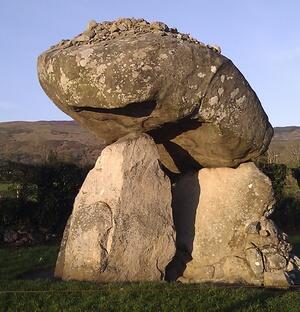There was a security fence around the city centre, and you could only enter through check points. The reason, of course, was that this made it harder for people to plant bombs there. From that first visit I can still remember being collected by a civil servant from the airport, and taken on a tour of Belfast in his car. As we drove along he pointed to sites that were notorious because of the murders and bombings that had taken place there. Then, just after we had passed a heavily fortified police station in Catholic West Belfast, my driver said, “We won’t go much further now. Nine times out of ten there’s no problem, but…” At that moment, another car pulled alongside us and the occupants looked very deliberately into our car. I had already decided that a one-in –ten chance of getting assassinated was not a gamble I fancied, and I raised no objection at all to a u-turn and quick departure.
I can also remember the British soldiers manning the numerous road blocks and approaching with their automatic weapons. Most of them seemed to be the same age as my students. Nineteen-year-olds brandishing lethal weapons did nothing to calm my nerves.
In the years that followed I have made many visits to Northern Ireland (and to the Republic of Ireland). I watched a kind of normality gradually return, though at times it seemed fragile. One constant throughout was the wonderful hospitality, regardless of which side of the border I was on. Thus it was a great pleasure to make another visit last week, especially as it was to witness the signing of an agreement by local councils on either side of the border to work together.
Cross-border development
So, on a beautiful spring day, I took the train south from Belfast. It is the Belfast-Dublin line but trains were not very frequent or fast. The train had to work hard up the incline in the Mountains of Mourne, but the scenery, the green grass (nowhere has grass as green as in Ireland), and the spring flowers made it an enjoyable ride. Disembarking in sun-kissed Dundalk, just across the border, and roughly half-way between Belfast and Dublin, I took a taxi, past the racecourse and out to the hotel just beyond the edge of town. It was there that the signing ceremony took place the next day.
The Memorandum of Understanding commits Newry and Mourne District Council (which is in Northern Ireland) and the Louth Local Authorities (from the Republic) to work together as a Strategic Alliance. They will have a Joint Committee of politicians from both sides. There will also be a Joint Senior Management Group of officials. Business and the local voluntary sector will be represented on an Advisory Forum and there will be Joint Project Groups.
This is the latest step in a long period of growing co-operation in this part of the island. Of course EU funds for cross-border co-operation have been a valuable lubricant. With the Irish economy devastated by the bankers and that in Northern Ireland also depressed, a joint focus on economic and sustainable development is now a necessity not an option.
This is a peripheral part of Europe, without big towns to ride the knowledge economy. So how have the public bodies here been able to make use of their territorial assets? They have delivered an INTERREG 3A (cross-border) project focused on Carlingford Lough, the estuary that separates them. This involved upgrades to marine infrastructure so as to be able to attract sailors and maritime tourists. There has also been a Beyond the Lough Youth Initiative that has put on events seeking to build peace and promote the qualities of the region, e.g. through a Celtic Arts Festival. There is an application for a 1.6M Euro project that would promote geological tourism in the region.
One particularly interesting project is under the EU’s CONCERTO fund that supports holistic local energy projects. Newry Low Carbon City Zone is focused on the centre of the city. It brings together a wide range of stakeholders. Together they aim to:
- Improve the energy efficiency and performance of our buildings;
- Increase the supply of renewable energy;
- Apply different energy technologies, techniques and practices in an intelligent and integrated way within the zone;
- Maximise all potential revenue and funding streams from a wide range of sources
A Twin City Region
So a twin-city, cross-border region is emerging between Newry and Dundalk. It is driven by bottom-up initiatives and local leadership, though the EU vision and programmes have played a valuable role. So has the peace process in Northern Ireland. Above all, we have local authorities that are willing and able to look out beyond their own boundaries and grasp the opportunities that are offered when you can see the bigger picture.
When I returned Dundalk station to travel back to Belfast, I was met by the police. The line was closed and so was the Belfast-Dublin motorway. There was a 500-pound bomb, enough to kill lots of people, in a “wheelie bin” in a van on a motorway underpass outside Newry. It is thought to have been on its way to a town centre, when the driver heard there was a police check ahead and abandoned the vehicle and is lethal contents.
You can read more about Cliff’s visit to Ireland and thoughts on cross-border development on his blog on the “Planning” website, http://www.planningresource.co.uk. And there are more interesting stories on his "World View" blog www.CliffHague.wordpress.com. Or visit Cliff on twitter.

